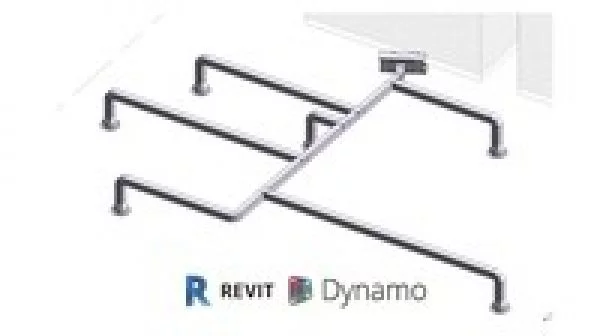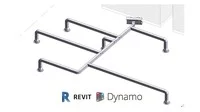
This course it’s part of a new series of developments towards bringing Dynamo as main platform tool on BIM processes for any type of project, its designed to help you solve modeling of ducting installations using Dynamo.
Modeling MEP its often a long and detailed work and most of the times its architecture and structure dependant so if anything changes mostly MEP modeling will as well, and a lot of rules are driven by analysis, requirements and formulas that can be programmed into dynamo.
This course would integrate MEP modeling with Dynamo Programming so patterns can be created and tools for dynamo player may enhace creation and modeling faster and easy to change.
We will start with a crash course of MEP modeling for Ducting Instalations, a basic overview of Dynamo Logic and from then review some basic ducting instalations and their creation patterns so that autorouting can be created and changes can be easily modified.
We will study ways to create elements integrated together and connect further to set construction possibilities.
We will explore custom nodes for specific aproaches so that your own toolkit can be created, tools for Revit Modeling, Tools for Dynamo Programming and Mixed Tools for MEP Instalations, and it will set the basics for MEP Generative Design.
Instructor Details
Courses : 3
Specification: Accelerated BIM Modeling with Revit 2020 Ducting and Dynamo
|
1 review for Accelerated BIM Modeling with Revit 2020 Ducting and Dynamo
Add a review Cancel reply
This site uses Akismet to reduce spam. Learn how your comment data is processed.

| Price | $9.99 |
|---|---|
| Provider | |
| Duration | 2.5 hours |
| Year | 2020 |
| Level | Beginner |
| Language | English |
| Certificate | Yes |
| Quizzes | No |

$54.99 $9.99



![Angular & NodeJS - The MEAN Stack Guide [2020 Edition]](https://courses.javacodegeeks.com/wp-content/uploads/2020/02/833442_b26e_4-300x300.jpg.webp)


Jose Monterrubio –
the course was informative but a lot of time was spent in unnecessary things. There were a lot of things missing, for example on an ac unit you have several points not just the duct so a lot of lines are created. I think the video should include how to choose the supply air point. also how to size the ducts by velocity or other settings.